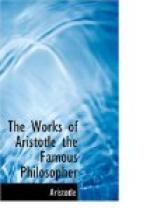CURE.
The part affected is the womb, of which there are two motions—natural and symptomatic. The natural motion is, when the womb attracts the male seed, or expels the infant, and the symptomatical motion, of which we are speaking, is a convulsive drawing up of the womb.
The cause is usually in the retention of the seed, or in the suppression of the menses, which causes a repletion of the corrupt humours of the womb, from which a windy refrigeration arises, which produces a convulsion of the ligaments of the womb. And just as it may arise from humidity or repletion, so also, as it is a convulsion, it may be caused by dryness or emptiness. Lastly also, it may arise from abortion or from difficult childbirth.
SIGNS.
On the approach of suffocation of the womb the face becomes pale, there is a weakness of the legs, shortness of breathing, frigidity of the whole body, with a spasm in the throat, and then the woman falls down, bereft of sense and motion; the mouth of the womb is closed up, and feels hard when touched with the finger. When the paroxysm or the fit is over, she opens her eyes, and as she feels an oppression of the stomach, she tries to vomit. And lest any one should be deceived into taking one disease for another, I will show how it may be distinguished from those diseases which most resemble it.
It differs from apoplexy, as it comes without the patient crying out; in hysterical fits also the sense of feeling is not altogether destroyed and lost, as it is in apoplexy; and it differs from epilepsy, as the eyes are not distorted, and there is spongy froth from the mouth. That convulsive motion also, which is frequently accompanied by symptoms of suffocation, is not universal, as it is in epilepsy, but there is some convulsion, but that without any violent agitation. In syncope both breathing and the pulse fail, the face grows pale, and the woman faints suddenly; but in hysterical attacks there are usually both breathing and pulse, though these are indistinct; the face is red and she has a forewarning of the approaching fit. It cannot, however, be denied that syncope may accompany this feeling of suffocation. Lastly, it can be distinguished from lethargy by the pulse, which is rapid in the former, but weak in the latter.
CURE.
In the cure of this affection, two things must be taken care of:—In the first place, nature must be stimulated to expel these hurtful humours which obscure the senses, so that the woman may be brought back from that sleepy fit. Secondly, during the intervals of the attack, proper remedies must be employed, in order to remove the cause.




